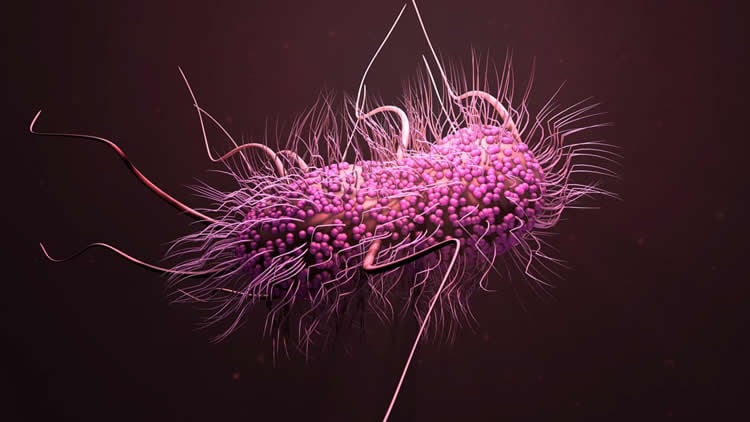Summary: Researchers have developed a new antibiotic medication that appears to be safe and effective in treating clostridium difficile infection.
Source: Flinders University.
A new antibiotic developed by a Flinders University researcher is being heralded as a breakthrough in the war against a drug resistant superbug.
Bacteria are winning the fight against antibiotics as they evolve to fight off traditional treatments, threatening decades of advancements in modern medicine, with predictions they will kill over 10 million people by 2050.
The scientific development of new, effective and safe antibiotics is crucial in addressing the ever-growing threat posed by drug resistant bacteria around the world.
Clostridium difficile infection (CDI) is a potentially deadly infection in the large intestine most common in people who need to take antibiotics for a long period of time, particularly in Australia’s ageing population.
Dr Ramiz Boulos, adjunct research associate at Flinders University and CEO of Boulos & Cooper Pharmaceuticsals, says the fact CDI is becoming resistant to traditional antibiotics is alarming and highlights the need to develop more effective treatments.
“Cases of CDI disease are rising and the strains are becoming more lethal. If there is an imbalance in your intestines it can begin to grow and release toxins that attack the lining of the intestines which leads to symptoms,” says Dr Boulos.
Over the past ten years, various strains of C. difficile have emerged, and are associated with outbreaks of severe infections worldwide. One particular strain is easily transmitted between people and has been responsible for large outbreaks in hospitals in the United States and Europe.
“It’s concerning when you consider CDI is one of the most common infections acquired during hospital visits in the Western hemisphere, and the most likely cause of diarrhoea for patients and staff in hospitals.”
But when doses of a new antibiotic called Ramizol were given to hamsters infected with a lethal dose of the bacteria, a significant proportion of hamsters survived the infection.
In a recent safety study in rats evaluating the effect of repeated exposure of the antibiotic, no rats experienced serious side effects or changes in weight.
“Our research indicates Ramizol is an extremely well-tolerated antibiotic in rats, with good microbiology and antioxidant properties. It also has high chemical stability and is scalable because of the low cost of manufacturing, which could make it a viable treatment option.”
Forty-eight rats were given a high dose of a new class of antibiotic for 14 days to assess its safety.
The research, which was undertaken jointly by Boulos & Cooper Pharmaceuticals, US- based Product Safety Labs and ToxStrategies and Flinders University was recently published in journal Scientific Reports.

“We are pleased with these results for two reasons. Firstly, we were able to give the rats a very high dose without mortalities or side effects,”
“Additionally, there were no changes in mean body weight, weight gain, food consumption or food efficiency for male and female rats attributable to Ramizol.”
“We believe Ramizol has the potential to be the standard of care for treating CDI and has the potential to be a blockbuster drug.”
The researchers say these findings open up a potentially simple treatment but further studies are required to pursue its development.
Funding: The study was funded by the Boulos & Cooper Pharmaceuticals, Product Safety Labs and ToxStrategies, Flinders University.
Source: Dr Ramiz Boulos – Flinders University
Publisher: Organized by NeuroscienceNews.com.
Image Source: NeuroscienceNews.com image is adapted from the Flinders University news release.
Original Research: Open access research for “A 14-day repeat dose oral gavage range-finding study of a first-in-class CDI investigational antibiotic, in rats” by Katherine Sibley, Jayson Chen, Lee Koetzner, Odete Mendes, Amy Kimzey, Janice Lansita & Ramiz A. Boulos in Scientific Reports. Published January 17 2019.
doi:10.1038/s41598-018-36690-9
[cbtabs][cbtab title=”MLA”]Flinders University”Fighting Deadly Drug Resistant Bacteria in Intestines with New Antibiotic.” NeuroscienceNews. NeuroscienceNews, 20 January 2019.
<https://neurosciencenews.com/drug-resistant-bacteria-antibiotic-10590/>.[/cbtab][cbtab title=”APA”]Flinders University(2019, January 20). Fighting Deadly Drug Resistant Bacteria in Intestines with New Antibiotic. NeuroscienceNews. Retrieved January 20, 2019 from https://neurosciencenews.com/drug-resistant-bacteria-antibiotic-10590/[/cbtab][cbtab title=”Chicago”]Flinders University”Fighting Deadly Drug Resistant Bacteria in Intestines with New Antibiotic.” https://neurosciencenews.com/drug-resistant-bacteria-antibiotic-10590/ (accessed January 20, 2019).[/cbtab][/cbtabs]
Abstract
A 14-day repeat dose oral gavage range-finding study of a first-in-class CDI investigational antibiotic, in rats
Drug resistant bacteria are winning the fight over antibiotics with some bacteria not responding to any antibiotics, threatening modern medicine as we know it. The development of new, effective and safe antibiotics is critical for addressing this issue. Ramizol, a first-in-class styrylbenzene based antibiotic, is an investigational drug indicated for Clostridium difficile infections (CDI). The objective of this range-finding study was to evaluate the potential general toxicity (based on toxicological endpoints selected) and toxicokinetics of Ramizol in male and female rats that may arise from repeated exposure via oral gavage over a test period of at least 14 days at doses of 50 mg/kg, 500 mg/kg and 1500 mg/kg. There were no mortalities in this study and no Ramizol-related clinical observations. Additionally, there were no changes in mean body weight, body weight gain, food consumption or food efficiency for male and female rats attributable to Ramizol administration. The observed pharmacokinetic behavior showed the presence of Ramizol in plasma at 24 hours post-dosing combined with increasing AUC(0–24) values during the course of this study in groups administered 1500 mg/kg/day, which suggests that at least some dosing groups will show accumulation of compound during repeated dose studies. These toxicology results have shown Ramizol is well-tolerated at very high concentrations in rats and support the further drug development of Ramizol as a first-in-class antibiotic for the treatment of CDI.







